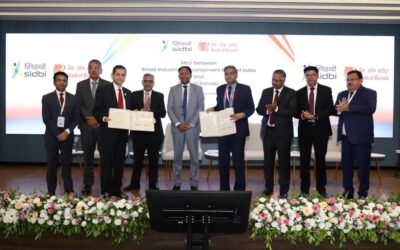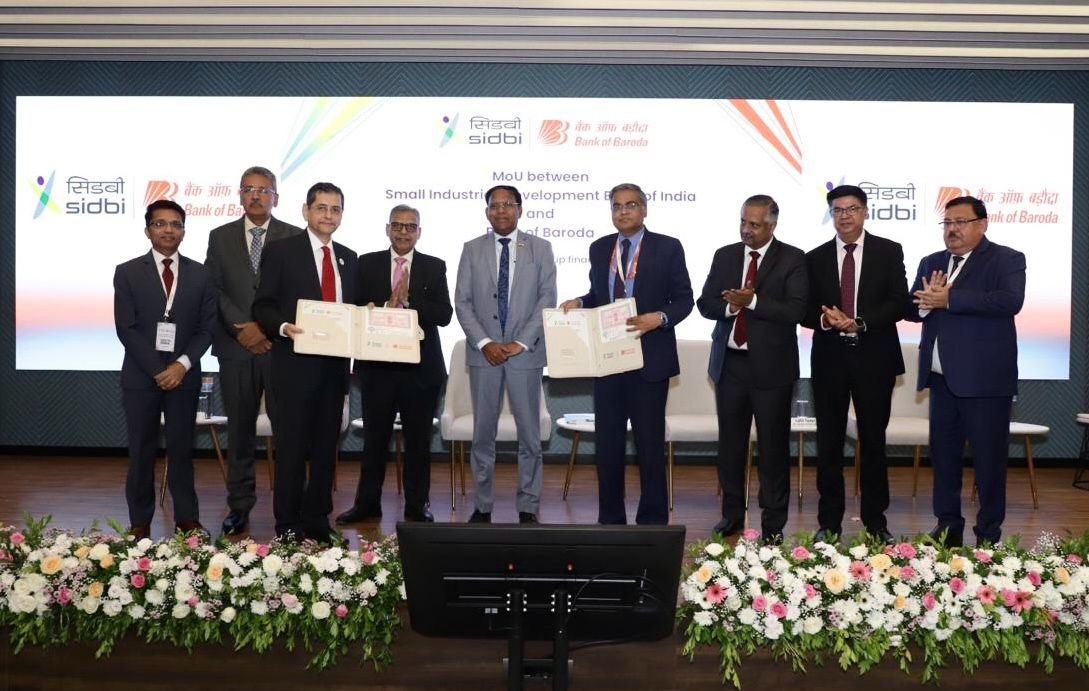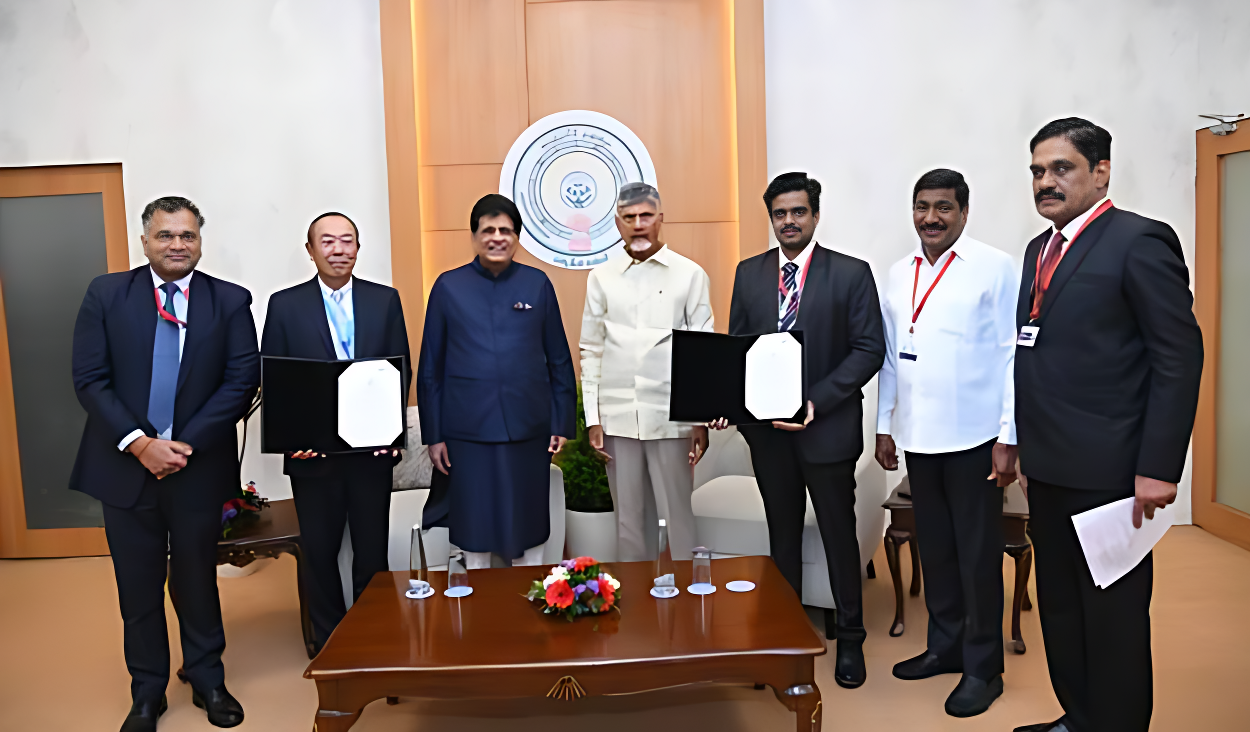SME Lessons for India: What Taiwan’s SME Ecosystem Can Teach us

In the ongoing series SME Lessons for India, we examine countries that have managed to create globally competitive SME ecosystems. After studying Vietnam and Thailand, Taiwan presents another compelling model. While smaller in size, Taiwan punches well above its weight, becoming a powerhouse across electronics, semiconductors, industrial machinery, automotive components, agrifood and digital services. Its SMEs are not just suppliers but active innovators, integrated into global value chains through policy support, clusters, talent pipelines and coordinated infrastructure.
The objective is not to critique India’s current standing, but to draw actionable lessons. Taiwan shows that national competitiveness is built not merely through large corporations or cheap labour but by designing a systemic ecosystem where SMEs thrive, innovate and scale globally.
Coordination Across Sectors
Taiwan’s SME success is rooted in a coordinated approach across sectors, backed by long-term strategy. Government programs, targeted incentives, cluster-based industrial parks and digital infrastructure have created an environment where small and medium enterprises are agile, globally connected and innovation-ready.
Electronics and Semiconductors: Taiwan’s global leadership in IC design, electronics manufacturing, and testing is well-known. Its Chip-based Industrial Innovation Program (CBI) alone commits US$9 billion over a decade to advance R&D, talent development and manufacturing infrastructure. SMEs benefit from tax credits for R&D, access to clean rooms and EDA tools and fast-tracked certification processes. Regional hubs like Hsinchu and Southern Taiwan ensure deep supply chain integration, with SMEs producing chips, packaging components and IoT devices that feed global supply chains.
Automotive and EV Components: Taiwanese SMEs in the automotive sector have successfully integrated into global supply chains. Firms producing precision tools, EV battery components, and electronic control units collaborate closely with OEMs and Tier-1 suppliers. Government-supported industrial parks provide shared infrastructure, training programs and logistics facilitation, allowing SMEs to scale without prohibitive capital investment.
Industrial Machinery and Precision Tools: From CNC machine production to automation systems, Taiwan’s SMEs dominate niche industrial machinery sectors. These enterprises leverage cluster-based support and technology matchmaking programs to access advanced tools and international buyers. High-quality standards and certifications, often subsidized, enable SMEs to supply Japanese, European and North American manufacturers.
Agrifood and Specialty Exports: Taiwanese agrifood SMEs have used government support to implement traceability, hygiene and sustainability practices, enabling exports to Europe, Japan and ASEAN nations. QR-coded tracking, batch-level quality monitoring and cold-chain infrastructure help small businesses meet stringent international standards. Government agencies provide subsidies and training to ensure SMEs remain compliant and competitive.
Digital Services and IoT Solutions: SMEs in Taiwan’s tech sector deliver software, SaaS platforms, industrial IoT solutions and AI-driven analytics. Cluster-based support, access to incubators, and fast-tracked IP protection allow these small firms to scale globally. Taiwan’s focus on talent development, including graduate and PhD programs in engineering and computer science, ensures a steady supply of qualified personnel to sustain innovation.
Why Taiwan Outperforms
Taiwan’s SMEs succeed not because they are cheaper, but because the system works in their favor. Policies are stable and long-term, infrastructure is plug-and-play and clusters are self-reinforcing. Even small businesses gain access to international buyers, technical know-how, financial instruments and skilled labor.
For example, credit guarantee schemes and risk mitigation tools allow SMEs to invest in high-value equipment and manage foreign exchange volatility. Subsidies for certifications and technology adoption reduce barriers for firms aiming to enter global supply chains. Across sectors, Taiwan’s SMEs benefit from integrated trade policies, cluster networks and proactive matchmaking with multinational corporations.
Challenges Taiwan Faces
Even with a strong ecosystem, Taiwan contends with several structural constraints. Talent shortages driven by demographic decline pose long-term risks, while SMEs face intense cost pressures from global competitors. The economy remains dependent on imported equipment, software and raw materials, highlighting the need for resilient supply chains. For India, these lessons underscore that SME competitiveness requires not just incentives but sustainable policies, talent development and supply chain robustness.
Key Lessons for Indian SMEs
India can adapt Taiwan’s multi-sector approach to strengthen its domestic SME base:
Policy and Incentives: Incentives must be tailored to sectors and SMEs, including tax credits, R&D subsidies and equipment support. Policies should be long-term and predictable to encourage high-value investments across electronics, automotive, industrial machinery, agrifood and digital services.
Cluster Development: Taiwan’s success is cluster-driven. India must identify regional hubs across sectors such as Tamil Nadu for electronics, Gujarat for industrial machinery, Punjab for agrifood and Karnataka for IT/IoT providing shared infrastructure, access to talent and linkages to global supply chains.
Talent and Skill Development: Sector-specific education, vocational training and partnerships with universities and industry are critical. Early STEM exposure, reskilling for mid-career professionals and attracting foreign experts will help Indian SMEs bridge capability gaps across high-tech and manufacturing sectors.
Global Integration: SMEs should be supported to meet international standards, certifications and compliance requirements. Trade facilitation, matchmaking, and exposure to global buyers will enhance their ability to compete globally.
Finance and Risk Management: Access to credit, capital subsidies and risk mitigation instruments enables SMEs to invest in modern technology, scale production and withstand demand or supply fluctuations.
Public-Private Partnerships: Collaboration between governments, industry associations, and global corporations is essential to support SMEs in accessing technology, knowledge transfer and international market opportunities.
Illustrative Indian Scenarios
Several emerging Indian SMEs could benefit from adopting Taiwan’s model:
- IC and Electronics Startups in Bengaluru or Hyderabad could leverage government support for design tools, prototyping, and IP protection, while accessing talent and infrastructure in dedicated electronics clusters.
- Automotive Component Manufacturers in Tamil Nadu can utilize shared production and testing facilities, certification subsidies and supply chain integration with global OEMs.
- Agrifood SMEs in Punjab and Maharashtra could implement traceability, hygiene and quality standards to expand exports to Europe, Japan and ASEAN countries.
- Industrial Machinery Firms in Gujarat can benefit from cluster-level technology adoption, partnerships and export facilitation programs.
- IoT and Digital Service SMEs in Karnataka can access incubators, talent networks and global market linkages to scale innovative solutions for industrial and consumer applications.
Taiwanese firms such as TSMC, UMC and Foxconn have already begun exploring investments, R&D collaborations and supplier development initiatives in India, offering SMEs opportunities for knowledge transfer, joint ventures and participation in high-value supply chains.
Execution Challenges in India
Implementing these lessons is not without obstacles. Land acquisition, power and water supply, and permitting delays remain major hurdles for industrial setups. Skilled labour at scale, particularly in advanced manufacturing, clean-room operations and electronics, is limited. Supply chains for specialty materials, chemicals and equipment are underdeveloped, making India vulnerable to global market fluctuations. Finally, policy continuity is essential; sudden shifts in incentives or regulations could undermine SME confidence.
Taiwan demonstrates that SME competitiveness arises from ecosystem thinking where policy, infrastructure, finance, talent and global linkages reinforce one another. India has the scale, talent and domestic demand to replicate this success. With coordinated clusters, sector-specific incentives, global partnerships and skill development programs, Indian SMEs can not only supply multinational firms but also lead innovation across multiple sectors from domestic soil.
Taiwan’s journey offers a blueprint: structured support, predictable policy and systemic integration transform small enterprises into globally competitive forces. India’s challenge and opportunity is to adopt this multi-sector approach with speed, focus and sustained execution, creating an SME ecosystem capable of powering the next wave of domestic growth and international expansion.











